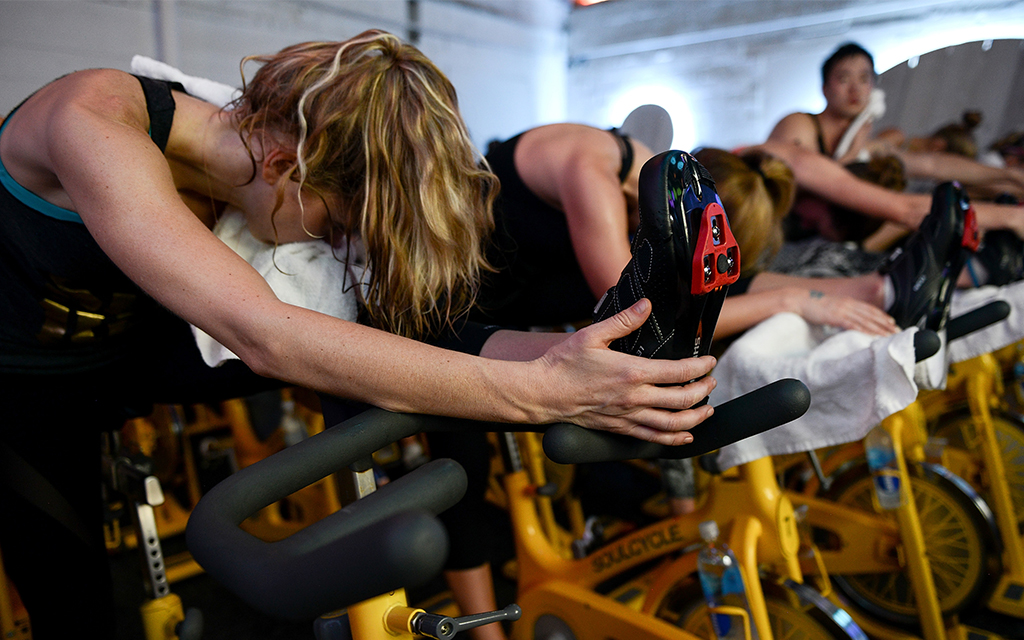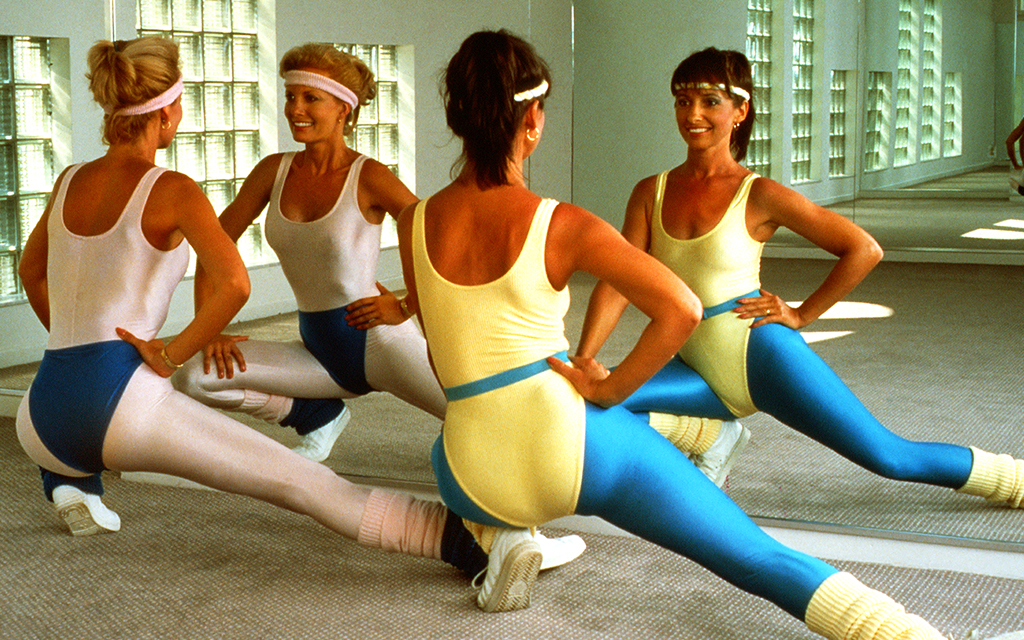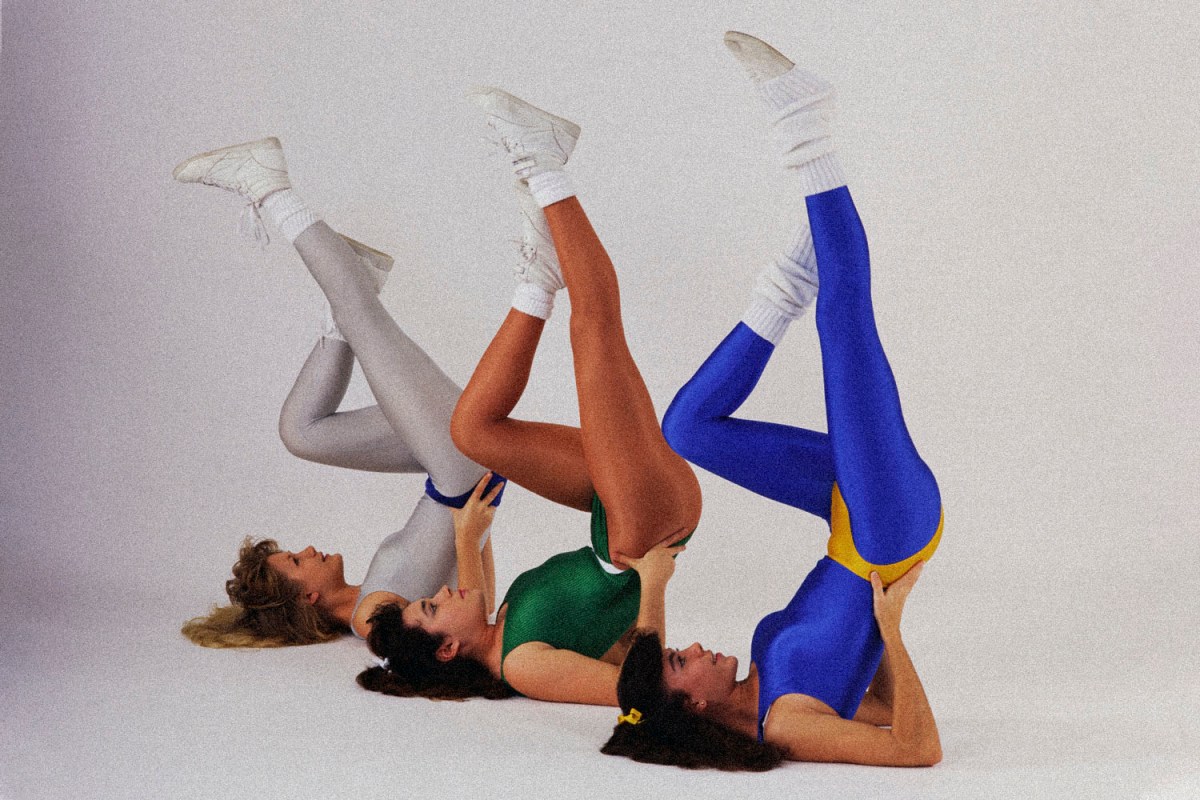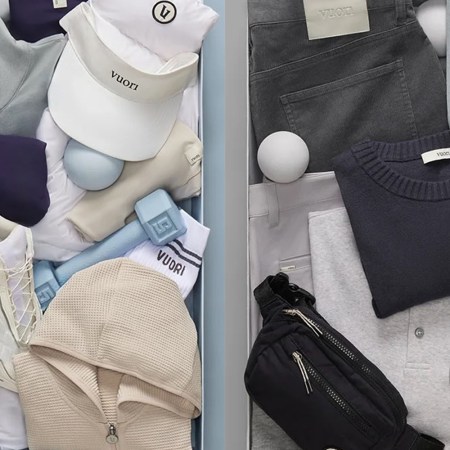
Saturday Night Live ran a sketch last fall in which cast members “auditioned” to become SoulCycle instructors. The characters included Deacon (who has an addiction to pushing himself), Trish (who was bullied in high school for being too tall, too thin and too pretty) and Flint (who lives life with no regrets). Each aspiring instructor says something patently insane to pump up the class. Flint, played by Bowen Yang, yells, “Abraham Lincoln died! But he didn’t have to. If I’d been there I could’ve stopped it. Will you be? LET’S RIDE!”
Insert your SNL complaint here, but the show’s generally got its ear to the ground. Studio 8H decided it was about time it lampooned a workout studio class, and sure enough, the audience laughed in all the right places. Over-caffeinated trainers, slick neon signs, certain members of the class working way harder than others — it’s familiar territory. Group fitness classes are an inevitability of most millennial and Gen Z lifestyles, especially those overwhelmingly in urban and suburban neighborhoods where boutique studios are as ubiquitous as Bank of America branches.

For years now, I’ve worked out alongside people whose names I will never know. I’ve traded battle ropes in rooms chilled below 50°F. I’ve been the worst yogi in a candlelit studio bumping Outkast. I’ve chest-bumped run club strangers at a track session downtown. This is the fitness world’s covenant in 2020: thinking up new and unique ways to let people sweat en masse. Young people spend less on cars and appear indifferent to the white picket fence, but they drop more dollars on fitness than any other cohort, and generally prefer to do it together. Having a friend there is great, but the illusion of intimacy, earned from showing up for the thing — “Even after a long day of work, we all still made it, didn’t we?” — is often more than enough.
A generation of agnosticism, then, has ironically coincided with a cultish passion for getting fit, for staying fit, for spreading the Good News on social media in front of brightly painted selfie walls, for worshiping #fitspo prophets, for crushing WODs on Thursdays mornings, for knowing that Trevor at the NoMad branch gives the best shadowboxing session and has jokes, too. This fragmented rhythm has become the beating heart of the industry. According to research reports from the Association of Fitness Studios, boutique fitness studios are singlehandedly responsible for the growth of America’s fitness sector. It can be summed up best with one party fact: ClassPass hosted 100 million workouts last year. Seriously.
Traditional gyms have tried to adapt; every gym I’ve belonged to over the last 10 years, for instance, has added that “turf” section, meant for more people and more movement. It’s just that people seem to prefer nabbing the last slot in an impromptu Saturday morning class to relying solely on a mirror, treadmill or even a personal trainer at a conventional gym. We have to be careful when stereotyping entire generations — the branch of study often undermines itself, and peer-group proclivities are rarely as pervasive as they seem — but a lazy scroll through Instagram will reveal that those born in the last two decades of the last century maintain an odd, steady relationship with perceived “discovery.” There is a tendency to claim ownership over supposed new experiences, be they types of restaurants, travel hotspots or group fitness classes.
But just as dive bars in north-central Brooklyn were serving beers well before they started receiving half-ironic patronage, and thousands of people walked up Peru’s Vinicunca before millions put it through filters online, group fitness classes were an American mainstay long before the flawless marketing and health studio incubation of the early 2010s.

The country first committed to working out together in the 1980s. In a society suddenly without budget constraints living in safer, bigger cities, conspicuous exercise was an amendment to the American dream, a form of physical therapy that would’ve seemed utterly alien to adults, who, for generations before, had simply played ball until it was time to use their hands to work. The Jane Fonda era brought half the population into the fold as aerobics, Jazzercise, trampoline classes and an ancestor to Barre called the Lotte Berk Method debuted in studios around the country.
The new classes took residence in humble community centers and Upper East Side lofts alike. Aerobics brought music. Jazzercise (think Zumba, but even goofier) was the first to give instructors microphones. By 1984, the company was the second-fastest growing brand in America, behind only Domino’s Pizza. Eventually, the ’90s arrived, and the nation’s fitness experience was further commodified as big-box gyms like Life Time and Planet Fitness came to the fore.
It’s important to point out the differences between the group-fitness enthusiasts of the ’80s and their contemporary counterpart. The original cohort didn’t have social media, for starters. Would they have blasted out their latest pump to a captive audience of followers if they could have? We have no way of knowing for sure, but yeah, probably. During a recent appearance on Conan O’Brien’s podcast, Ricky Gervais pointed out that if Twitter had been around for centuries, a number of beloved figures would almost certainly have cancel-worthy tweets. The movers and shakers of the 1980s didn’t have social media, so made do with what they had — they kept showing up. They got used to performing in front of each other. Speaking to Harpers Bazaaar in 2018, Dr. Natalia Mehlman Petrzela of The New School, a fitness historian, said,”[Boutique fitness] is a realm of conspicuous consumption that our culture accepts and even celebrates.”
There are more options today, and more money to spend. If you’re determined enough, you can now commit well over $100 a week to sparring, jumping and dancing with people you will never see again. Just know that this all started a long time ago. The complexity of the fitness has evolved (though many trainers still swear by step aerobics, which was invented in 1989), the studios are a little shinier and the copywriting is all noveau-tribal (“Move your body, find your soul”), but the reason we do it, and do it this way, shares its DNA with the hustling young urbanites of yesteryear. As much as it may pain millennials to admit, the boomers got to this trend first.
Whether you’re looking to get into shape, or just get out of a funk, The Charge has got you covered. Sign up for our new wellness newsletter today.























